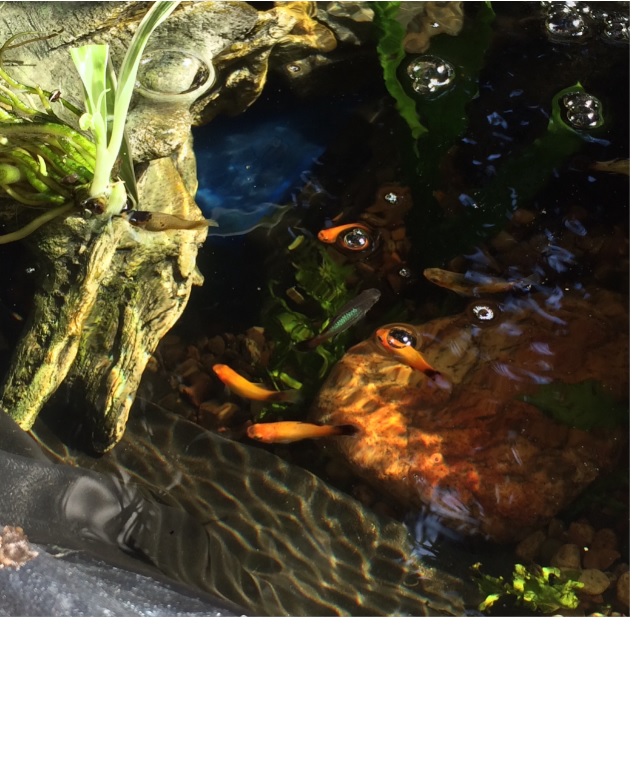
Pond Water Test
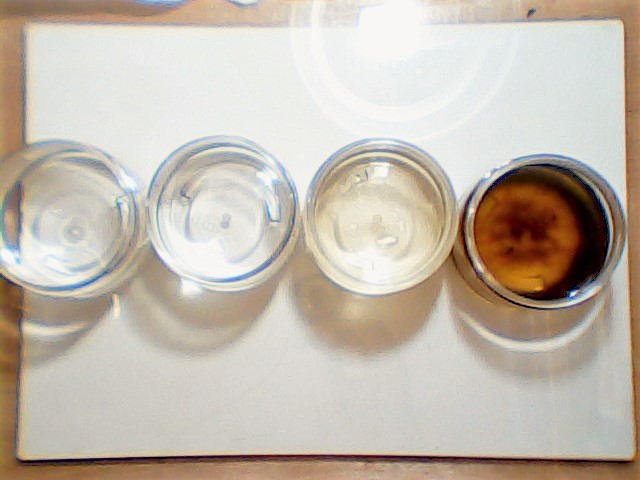
Pond Master Test Kit
Tests Wide Range pH, Ammonia, Nitrite & Phosphate
Sample 1 from Date 5/13/2020
| Sample 1 | pH | Ammonia | Nitrite | Phosphate |
|---|---|---|---|---|
| Tap | 9 | 0.5 | 0 | 0.125 |
| Filtered | 7.5 | 0 | 0 | 0 |
| Pond | 8 | 0 | 0 | 5 |
| Worm Tea | 6.5 | 1 | 0 | 10 |
Why each matters
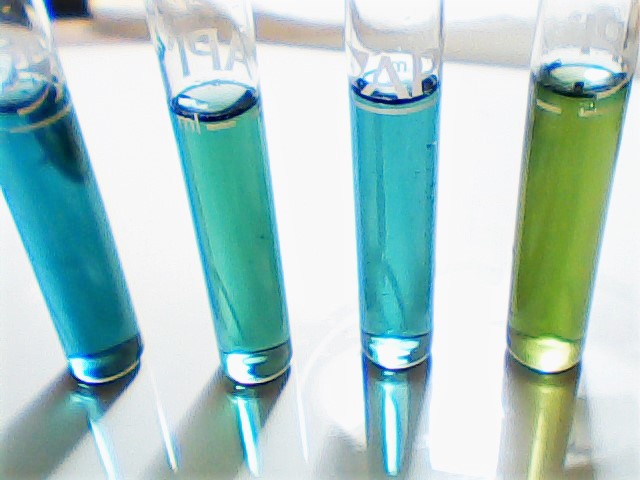

Sample 1. pH levels for tap, filtered, pond, and worm tea.
Wide Range pH Test
Why Test pH?
pH is the measure of acidity or alkalinity of water. A pH reading of 7.0 is neutral, a pH higher than 7.0 is alkaline, and a pH lower than 7.0 is acidic. A healthy pond depends on proper pH balance. Many factors can significantly alter pond water pH, creating an unhealthy environment for pond life. Acid rain, minerals leaching from soil or rain run-off, decomposing plants, and animal waster can all contribute to unstable pH levels in the pond.
pH in Ponds
A pH of 7.0 is considered ideal for plants and fish in the pond. Some species of pond plants, such as waterlillies and hyacinths, thrive in slightly acidic water below 7.0. Pond fish prefer an alkaline pH above 7.0. Therefore, an acceptable pH range is 6.8 to 8.2. Extreme pH levels above 8.2 or below 6.8 should be avoided.
Problems of low pH
Many ponds tend to turn slightly acidic (between 6.8 and 7.0) as the pond life develops. A pH below 6.8 will stress pond inhabitants. A low pH may be caused by increased carbon dioxide concentrations, overstokcing with fish or poor surface agitation. Proper fish stocking, as well as adequate pond filters of fountains, will correct carbon dioxide build-up and help stablize pH. A low pH (acidic water) may also be caused by decomposing organic matter, solid waste from fish and birds, and decaying vegetation. The use of API POND-ZYME SLUDE DESTROYER and regular pond maintenance will help to eliminate stressful pH fluctations.
Directions for Testing pH
- Fill a clean test tube with 5ml of pond water (to the line of the tube)
- Add 5 drops of Wide Range Test Solution holding dropper bottle upside down in a completely vertical position to assure uniformity of drops.
- Cap the test tube and invert tube to mix solution. Do not hold finger over open end of tube as this may affect the pH of the test solution.
- Determine the pH by comparing the color of the solution with those on the pH color chart on the back of booklet. The tube should be viewed against the white background in a well-lit area.
Raising and Lowering pH in the Pond
pH results between 5.0 to 6.8 (acidic)
To raise pH use API POND pH UP. Add 2 teaspoonsful (10ml) of pH UP for each 50 gallons (189 L). pH should be raised no more than 0.5 units every 24 hours.
pH results 7.2 to 9.0 (alkaline)
To lower pH use API POND pH DOWN. Add 1 teaspoonful (5ml) of API POND pH DOWN for each 50 gallons (189 L) of pond water. pH should be lowered no more than 0.5 units every 24 hours.
Ammonia Test (NH3/NH4+)
Why Test Ammonia?
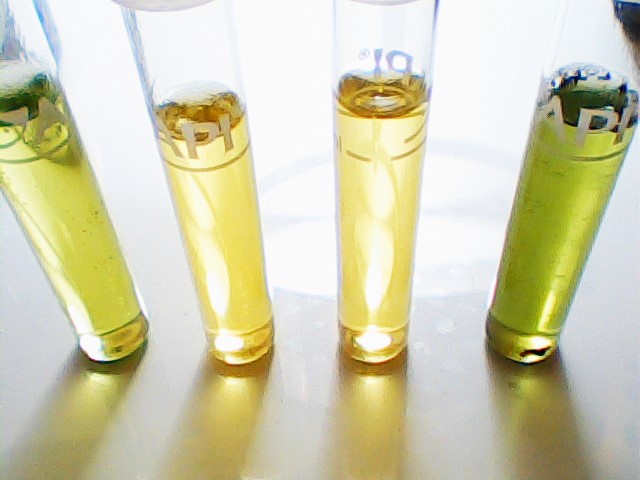

Sample 2. Ammonia levels for tap, filtered, pond, and worm tea.
Ammonia is a toxic waste excreted into the pond by fish, birds, and other pond life. The natural process that controls ammonica in the pond is called biological filter. The biological filter is comprised of nitrifying bacteria that use ammonia as a food source to grow and reproduce. The nitrifying bacteria convert ammonia to nitrite (also toxic) which in turn is converted into non-toxic nitrate. A healthy pond has no detectable ammonia. Newly set-up ponds need time to develop the biological filter. Until sufficient numbers of nitrifying bacteria grow in the pond, ammonia will be detected. Overstocking the pond with fish, uneaten fish food and decomposing vegetation can cause excessive ammonia. Ammonia is highly toxic to all pond life.
What the Test Results Mean
In newly set-up ponds, the ammonia level may surge up to 10 parts per million (ppm) or more and then fall as the biological filter becomes established. In a established pond, the ammonia level should always be zero. Ammonia levels above 0.5 ppm indicate possible overfeeding, overstocking of fish, or excessive decay of organic matter.
Reducing Ammonia Levels
In newly set-up ponds, ammonia and nitrite levels will rise and then fall in the first few weeks, indicating the formation of the biological filter. However, to protect the fish use API POND AMMO LOCK, to detoxify ammonia. It’s essential to only add a few pond fish for the first few weeks of the initial pond set-up. Test pond water weekly with the API POND WIDE RANGE pH, API AMMONIA,
Nitrite Test (NO2-)
Why Test Nitrite?
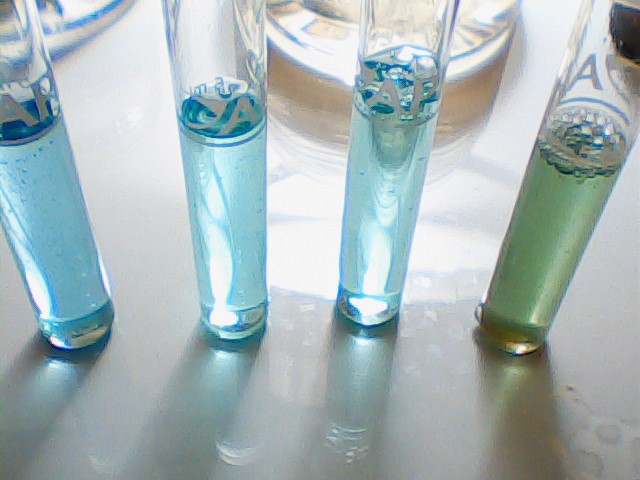

Sample 3. Nitrite levels for tap, filtered, pond, and worm tea.
Phosphate Test (PO4^3-)
Why Test Phosphate?
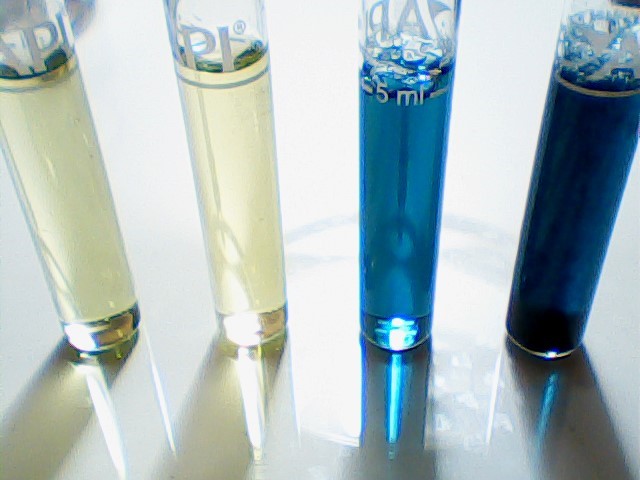

Sample 4. Phosphate levels for tap, filtered, pond, and worm tea.